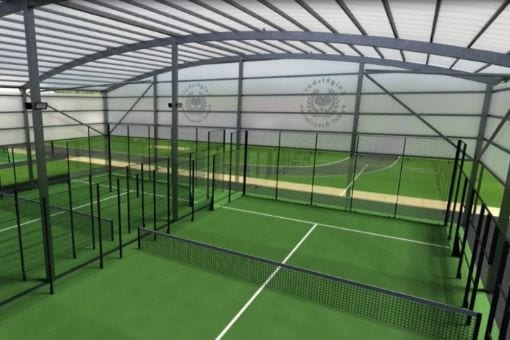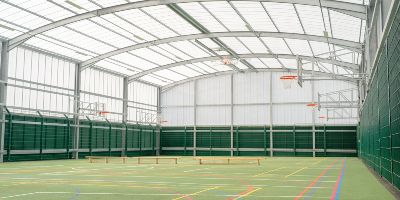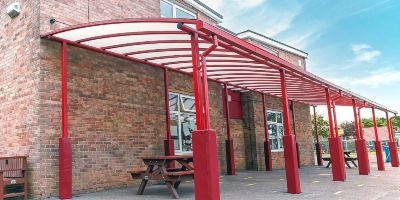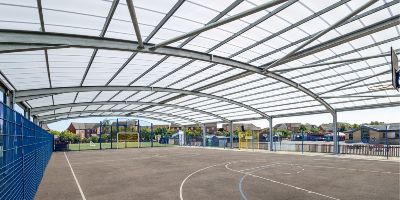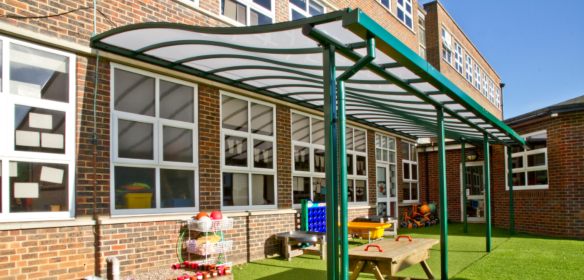Have you ever tried to have a conversation in a loud, echoing room? It’s frustrating, isn’t it? You have to constantly strain to hear and understand what the other person is saying.
Now, imagine a child experiencing that same frustration day after day in their learning environment. For some time, we have focused on books and teachers as the primary factors in student performance.
However, we have overlooked one very important thing: the simple power of sound. The hidden stress of a poor acoustic environment can make the calmest students feel agitated. This important field of study is classroom acoustics.
Why should we care so much about the sound quality of a room? Acoustics relate directly to a student’s ability to concentrate and remain calm. It’s not just the loudness that counts.
It’s the quality of the sound and how it travels and bounces around. We will highlight the direct relationship between noise levels and student behaviour.
In this article, we will show how classroom acoustics affect everything from focus to memory.
We will also cover practical acoustic solutions for your school’s sound design.
The Link Between Sound and Student Behaviour
The moment a child enters a learning environment, their auditory system goes to work. In the presence of poor classroom acoustics, the child’s brain requires extra effort to process the sound. This constant battle to listen is also referred to as excessive noise. This type of strain often leads to many behavioural problems.
When a child cannot hear clearly or understand their teacher, they begin to drift. They can become either fidgety, talkative, or finally become completely detached. This is why classroom acoustics are so important to both pupils and teachers. The real trouble is what is known as the signal-to-noise ratio or SNR.
This is a measure of how loud the teacher’s voice (the signal) is compared to the background noise (everything else). If the SNR is too low, the student will miss important pieces of information. This lack of clarity is likely to cause misbehaviour.
The architectural design of the school should increasingly consider the acoustic design. This ensures an acoustic environment is created that supports effective learning.
If we want the best learning environment, the first step is to reduce this strain. We can do this effectively by reducing noise and echo, which enhances the classroom for everyone involved.
3 Ways Noise Levels Affect Learning and Concentration
1. Noise makes it harder to focus
A student can’t concentrate completely when excessive noise levels are present. Noise sources can include the loud humming from the HVAC system, a type of mechanical noise. It can also be traffic outside or noise from neighbouring high-traffic hallways.
All of these sounds become noise distractions. These distractions force the student to use valuable mental energy just to block out the unwanted sounds. This leaves less energy for the actual learning outcomes.
The key technical issue here is reverberation. This occurs when sound bounces off hard surfaces, such as concrete walls, floors, and tile or metal ceilings. This bouncing creates an echo that makes the teacher’s voice muddy and unclear. The time it takes for a sound to fade is known as the reverberation time, or RT60.
When a room has long reverberation times, it creates a significant amount of ambient noise. This severely harms speech intelligibility. Research has shown that noise levels as low as 35 decibels (dBA) can start to impact concentration. Getting the right acoustic setup is critical to reduce noise.
2. Increases stress and frustration
Think about how you feel when you can’t understand a single word in a meeting. Students feel this frustration deeply during the school day due to poor acoustics. When the background noise level is too high, students cannot hear correctly. This causes stress, making their bodies more tense.
The constant effort to hear causes headaches and general anxiety in the students. This increased state of stress makes it difficult for students to control their own emotions and behaviour. They may lash out at other students or withdraw from participation because they are simply overwhelmed by their acoustic environment.
This poor acoustic quality also creates stress on the teacher. Teachers have to raise their voices just to be heard as the classroom noise increases. The constant yelling from teachers creates severe vocal strain. This leads to a negative cycle where the teacher shouts louder, and the students get noisier in response.
This leads to greater tension and hinders learning. This is why the impact of acoustic conditions is an important part of modern education planning and school design. The goal is to install acoustic treatments to absorb sound in the classrooms, creating a peaceful learning environment.
3. Reduces memory and understanding
When a student struggles to hear, the information doesn’t get encoded correctly into their memory. This is especially true for students with hearing issues. However, it also affects all students. If speech clarity suffers, the brain gets only bits and pieces of the lesson.
It has to fill in the blanks, which is another great drain on cognitive resources. The American Speech-Language-Hearing Association (ASHA) emphasises that good acoustic performance directly relates to academic performance.
When classroom acoustics are poor, the sound quality is low. This poor sound quality greatly diminishes the student’s ability to grasp new material. Consider trying to take notes while listening to a recording that continually skips or misses key pieces of information. You would miss important details, and your notes would not make sense.
That is what an acoustically poor learning environment feels like for students. By implementing acoustic solutions and controlling sound levels, speech clarity can be improved, leading to better retention. This makes it easier for the teacher to teach and the student to learn.
What are the Hidden Stresses of Poor Acoustics?
The stress of poor acoustics is not readily apparent. It is a drain on energy that students and teachers alike experience. This ongoing stress carries both physical and mental disadvantages.
Vocally, teachers often experience vocal fatigue, which can lead to vocal nodules or hoarseness. This is the number one occupational hazard in the field of education, where poor acoustic performance is a prevalent issue.
Students, on the other hand, experience fatigue from the constant strain of suppressing background noise. It is like sitting in a room where the ambient noise is always too high and one is too on guard to be totally relaxed.
Students, particularly those with hearing losses or attention difficulties, experience the greatest issues as they need many times the signal-to-noise ratio (S/N) that typical peers do.
The American National Standards Institute (ANSI) has established specific acoustic standards for schools. They give recommendations for noise and reverberation time to be used.
The ignorance of the value of acoustics indicates that we are doing a disservice to those who provide a fair opportunity for all of our learners.
The improvement of the classroom experience must be achieved by reducing the hidden impact of background noise.
We’ve covered a blog on how to create outdoor learning spaces for students with disabilities.
Methods Schools Can Use to Create Calm Spaces with Good Acoustics
Schools should actively prioritise good acoustics when planning any school design or building upgrade. The goal is to absorb sound instead of letting it bounce around. Let us look at some of the key elements required to create an effective acoustic control situation.
These changes will significantly enhance the acoustic environment, creating a calm atmosphere that enables students to work in a peaceful setting.
1. Design quiet zones and outdoor learning areas
Smart school planning involves strategically placing classrooms away from very high-traffic or very loud areas. For example, classrooms should be located away from active zones, such as gymnasiums, cafeterias, or areas with heavy vehicle traffic.
Furthermore, using spaces like covered areas for outdoor learning, provided by A&S Landscape, helps immensely. These areas utilise distance and natural elements to help reduce noise and provide a calm space away from the interior building’s classroom noise. This provides an important break from the high-decibel areas inside the school.
2. Use materials that absorb sound
Adding materials that absorb sound is the easiest and most effective way to address acoustic problems. Schools should use softer materials, such as carpet, cork, or special plasterboard, instead of hard, reflective surfaces. Acoustic tile or hanging pieces, called acoustic baffles, should be used on the ceiling frequently.
These acoustic panels or baffles help reduce the reverberation time (RT60) to levels recommended by acoustic standards.
Adding these elements eliminates the long echo times that make it difficult to understand speech. The sound quality improves significantly, and the enhanced classroom sound immediately benefits students, resulting in improved academic performance.
3. Think about how to keep noise down when planning classrooms
Acoustic control must be considered from the very beginning of any new construction or major renovation. This includes placing mechanical parts in the correct locations. For example, the ANSI noise limits should be considered when selecting lighting and HVAC systems.
To prevent sound from transferring from one classroom to another, walls between classrooms should be soundproofed. This is part of a full plan for managing sound. Designers need to consider how the space sounds as a whole.
This is how we make sure that noise from one room doesn’t become a problem in the next. This meticulous acoustic design ensures that the sound in schools meets the highest standards for learning.
How Better Acoustics Improve Behaviour and Well-being
When schools put a lot of thought into how sound works, they make a big difference. Better soundproofing in the classroom means that students are less stressed and have more control over their learning environment.
They no longer have to deal with noise and echo to hear and understand the lesson clearly. This reduction in frustration leads to improved behaviour immediately.
Teachers can lower their voices, making them less strained and creating a calmer atmosphere in the room. When students can hear well, the speech is clear, and they can focus on what is being said. The sound quality makes it easier for all students, even those who are sensitive to sound, to fully participate.
A good acoustic environment makes everyone feel calm, focused, and ready to learn. Schools that invest heavily in sound quality and acoustic solutions are making a significant investment. It helps everyone feel better and do better in school.
Final Thoughts
The proof is clear: acoustics play a crucial role in the daily lives of all students and teachers. When a learning space has poor acoustics, the constant battle against excessive noise can cause stress, fatigue, and disruptive behaviour.
As a fundamental part of modern education, we must ensure that classroom acoustics are optimal. We can achieve great results by utilising solutions such as acoustic panels and adhering to acoustic standards.
Acoustics affect everything, from how well we pay attention to how well we remember things. The good news is that we can fix it. This carefully planned acoustic design is what will make the learning environment truly better. We need to move towards places where students can finally hear and understand clearly, so they can do well in school and make friends.






